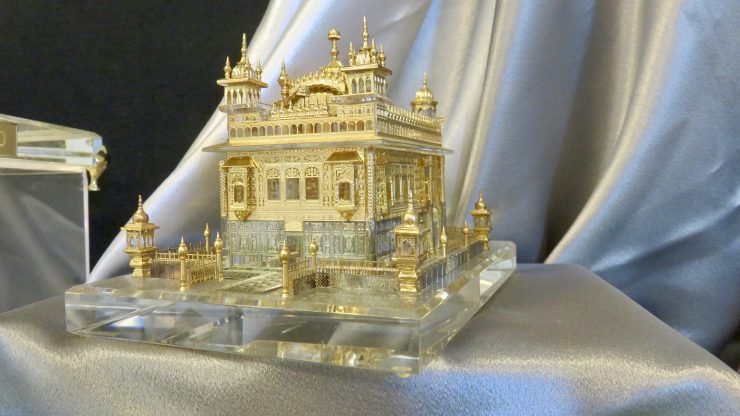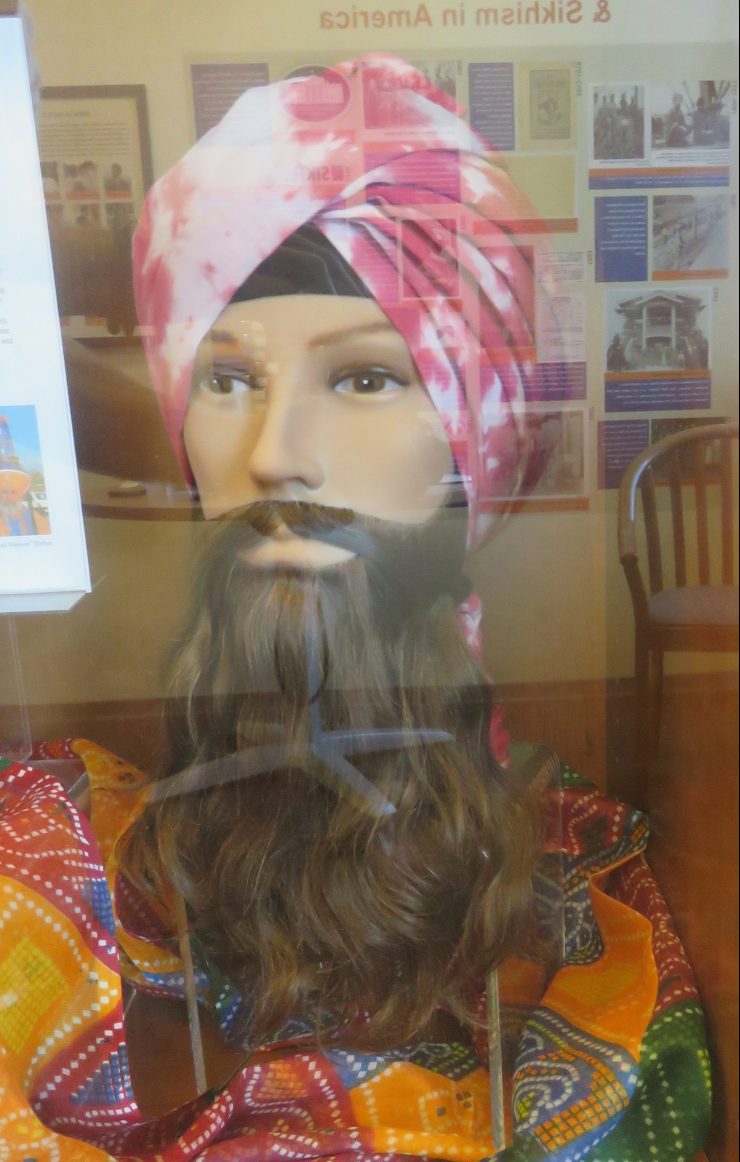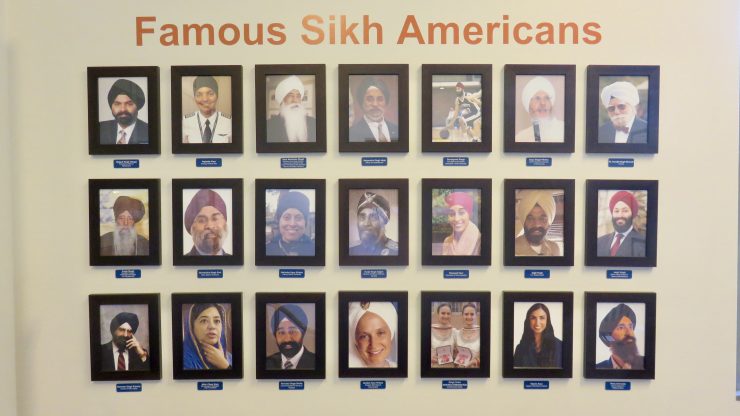Exploring the Library: The Sikhs and Sikhism in America Study Room
October 25, 2019
I grew up in northwestern Pennsylvania in a town called Wilcox. Wilcox has a population of roughly three hundred and sixty people and surrounding it is over five hundred thousand acres of forest. All of which is to say, growing up, I was not surrounded by many different religions. My only exposure to different beliefs was exploring different areas of the Christian faith. I knew about a lot of the world’s religions, I just never had any personal interactions with any other than Christianity.

A miniature replica of Harmandir Sahib, usually called the Golden Temple in English. Harmandir Sahib is located in the city of Amritsar, Punjab, India and is a prominent location for the Sikh people.
If I’m being honest, I knew very little about the Sikh religion. Once I realized this, it opened my eyes to how little I knew of other cultures. I wish I could say that I had a better understanding of Sikhism before I entered the Sikhs and Sikhism in America Study Room (Room #208, on the second floor of the Leatherby Libraries) but I cannot. Once again, I took advantage of one of the collections this library has and learned about something new. This week, I was able to dive into the Sikh religion and learn about the history of Sikhism and how they have played an integral part in the US, in the military in particular.
Sikhism is a monotheistic religion founded in the 15th century by Guru Nanak in the Punjab region of what is now India and Pakistan. Sikhism is the fifth-largest organized religion in the world. It is also one of the youngest of the major world religions. The more I researched the Sikh religion the more I realized how much mine and their beliefs lined up. Sikhs teach tolerance and absolute equality of all people regardless of gender, race, class, or religion. They believe in protecting the defenseless and defending civil liberties. Additionally, they support equal rights for women.
While looking around the room, I discovered the purpose of the Sikh turban. Until I entered the study room, I simply understood that turbans were for religious purposes and never thought more into it. Now, I know that the Sikh turban is a symbol of discipline, integrity, humility, and spirituality. The fabric of the turban is around fifteen feet long and is wrapped methodically on the head every time it is placed on someone’s head. Sikh men wear turbans to cover their long hair which I did not know about and found fascinating.
I’m finishing the blog post sitting at the table in the Sikh room and looking at the wall of famous Sikh Americans. The Sikh people have helped develop our country as far back as the late 1800’s. It is about time that I learned about it. Similar to the Italian Heritage study room, this room lends a hand in enlightening people like myself who are not familiar with Sikhism about this religion and all the good the Sikh people have done in America. We may be from different religions or come from different areas of the world but we are more similar than we may think.




